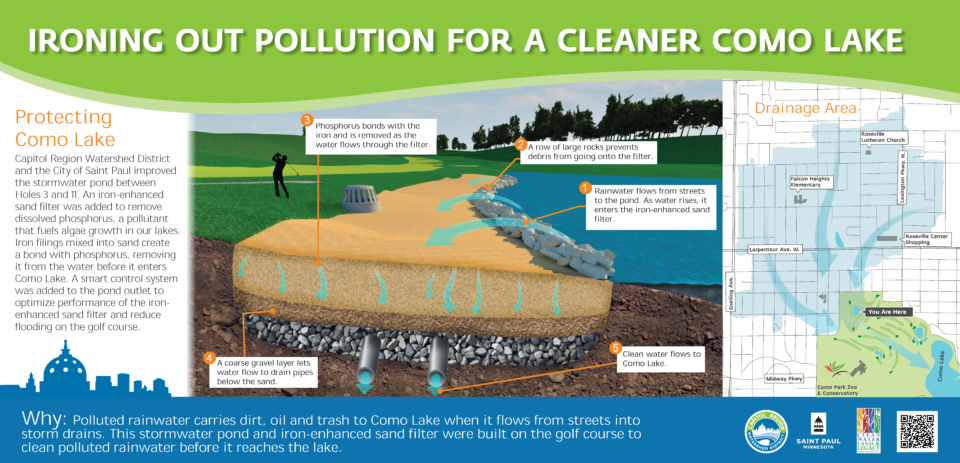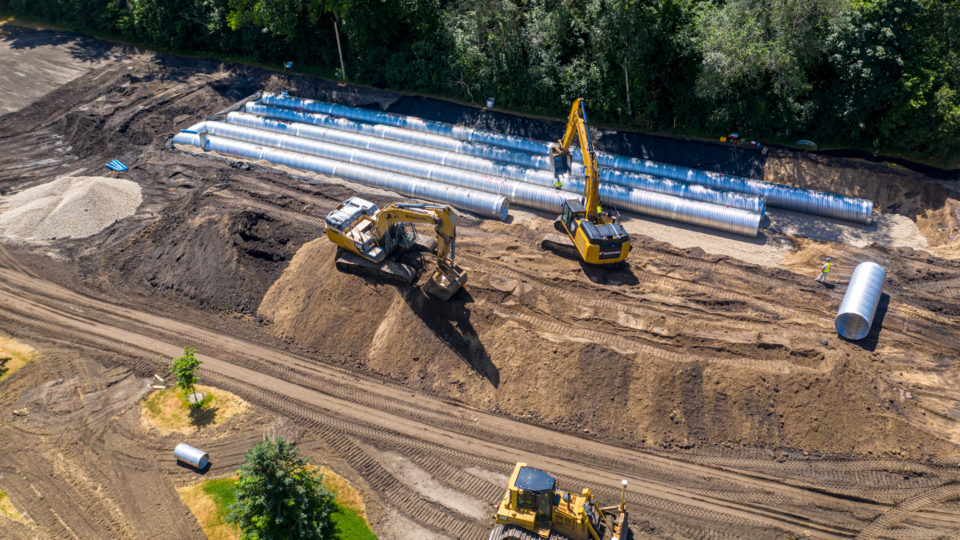Como Golf Course
Improving Water Quality in Como Lake
Capitol Region Watershed District (CRWD) was awarded a $1.76 million grant in 2016 through the Minnesota Board of Water and Soil Resources’ Targeted Watershed Program (TWP) funded by the Clean Water, Land and Legacy Amendment for work in the Como and McCarrons sub-watersheds.
CRWD, in partnership with the City of Saint Paul, identified locations for stormwater treatment practices within the 450-acre Como Regional Park. Cleaning up the water that runs off the park land before it reaches Como Lake is a critical component of improving water quality in the lake.














